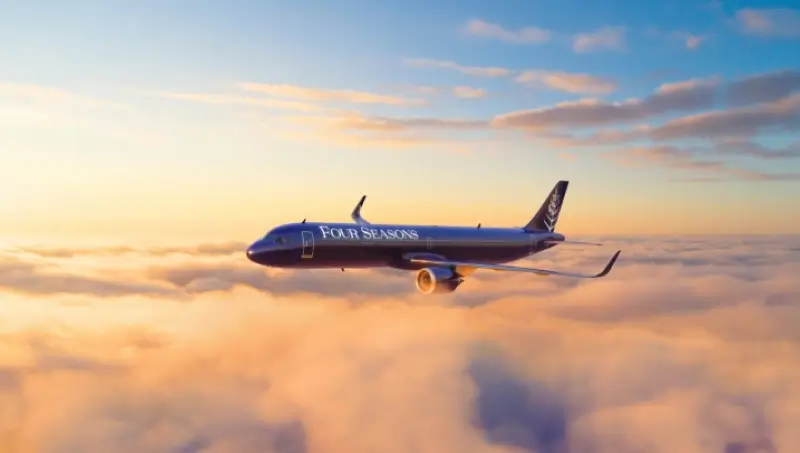
Live aircraft tracking to become a reality
Nov 11, 2015

Live aircraft tracking is set to revolutionize aviation by providing real-time data on flight locations, speeds, and altitudes. This technology harnesses advanced satellite systems and ground-based radar to enhance situational awareness for both air traffic controllers and the general public. With improved tracking capabilities, airlines can optimize routes, reduce delays, and enhance safety measures. Additionally, passengers and aviation enthusiasts will enjoy increased transparency regarding flight statuses. As global initiatives push for better tracking standards, the aviation industry is on the brink of a new era where live tracking becomes an integral part of air travel experience.
Live aircraft tracking is set to revolutionize the aviation industry, providing real-time data about flight movements to both aviation professionals and the general public. With advancements in technology, the implementation of live tracking systems has become a priority for airlines, airports, and regulators. This article explores how live aircraft tracking is becoming a reality, its benefits, and the technology behind it.
Understanding Live Aircraft Tracking
Live aircraft tracking refers to the ability to monitor the position, altitude, speed, and flight path of an aircraft in real-time. This system utilizes a combination of satellite technology, radar systems, and ground-based infrastructure to gather data. The information is then transmitted to various platforms, enabling users to access it through apps, websites, and other digital interfaces.
Benefits of Live Aircraft Tracking
Implementing live aircraft tracking systems brings numerous advantages:
- Enhanced Safety: Continuous monitoring of aircraft positions helps air traffic control to manage routes more effectively, reducing the risk of mid-air collisions and improving overall safety.
- Increased Efficiency: Airlines can optimize flight paths based on real-time weather conditions and air traffic, leading to fuel savings and reduced delays.
- Passenger Experience: Travelers can access live flight information, allowing them to stay updated on their flight status, arrival times, and any potential delays.
- Operational Transparency: Live tracking promotes operational transparency, giving stakeholders, including regulators and the public, access to vital flight data.
Technological Innovations Driving Live Aircraft Tracking
The implementation of live aircraft tracking relies on several cutting-edge technologies:
Satellite Communication Systems
One of the key components of live tracking is satellite communication. These systems allow for global coverage, enabling tracking even in remote areas where traditional radar may be unavailable. With advancements in satellite technology, the accuracy and reliability of tracking data have significantly improved.
Automatic Dependent Surveillance–Broadcast (ADS-B)
ADS-B is a surveillance technology that enables aircraft to determine their position via satellite navigation and periodically broadcast it. This information can be received by air traffic control and other aircraft, providing a comprehensive view of air traffic in real time.
Ground-Based Radar Systems
While satellite systems are essential, ground-based radar remains crucial for tracking aircraft during takeoff and landing phases. These systems complement satellite data, providing a layered approach to monitoring flight movements.
Challenges to Implementation
Despite the clear benefits, several challenges must be addressed for live aircraft tracking to become fully integrated into the aviation industry:
- Data Privacy: The availability of real-time flight data raises concerns about privacy and security. Striking a balance between transparency and safety is essential.
- Infrastructure Costs: Implementing live tracking systems requires significant investment in technology and infrastructure, which can be a barrier for smaller airlines.
- Regulatory Compliance: Navigating the regulatory landscape can be complex. Airlines must ensure that their tracking systems meet all safety and operational standards.
The Future of Live Aircraft Tracking
As technology advances and the demand for real-time information grows, the future of live aircraft tracking looks promising. Innovations such as artificial intelligence and machine learning are expected to enhance tracking capabilities further. These technologies can analyze vast amounts of data to predict flight delays, optimize routes, and improve safety protocols.
Additionally, the integration of live tracking with other transportation systems, such as trains and buses, could create a seamless travel experience for passengers. Imagine being able to coordinate your travel plans based on real-time flight data, ensuring that your ground transportation aligns perfectly with your arrival time.
Conclusion
Live aircraft tracking is no longer a concept of the future; it is becoming a reality that promises to transform the aviation landscape. With significant benefits in safety, efficiency, and passenger experience, the aviation industry is poised to embrace this technology. However, addressing challenges related to data privacy, infrastructure costs, and regulatory compliance will be critical to its successful implementation.
As we move forward, the collaboration between airlines, technology providers, and regulatory bodies will be essential in realizing the full potential of live aircraft tracking. This innovation will not only enhance operational efficiency but also improve the overall travel experience for passengers worldwide.
Related Articles

Explore Thailand: The Best Islands to Visit for Paradise, Adventure, and Relaxation

The Ultimate Guide to the Best Islands in Thailand for Your Next Getaway

Do babies need passports? How to get a passport for a newborn

How to get a U.S. passport fast: here’s how to expedite the process

What is Mobile Passport Control: 5 reasons why you should use it

SENTRI vs. Global Entry: A detailed guide

Do you need a passport to go to the Bahamas? Let’s find out

Do you need a passport to go to Mexico? A detailed guide

Do you need a passport to go to Canada? We got the answer

Do You Need a Passport for a Cruise: An Essential Travel Guide

Booster Seat Requirements: All the Rules to Follow in Your Rental Car

What Are the World’s Most Powerful Passports, and How Does Yours Rank?

How to Take a Passport Photo at Home: A Helpful Guide

You've got to have heart! Southwest's new livery

Your opinion: Should water be free on low cost carriers?

Young women bolder than guys as solo travellers
